|
1964 - Gregory Air Charter.
The air taxi business run by Ken Gregory had been so successful that a second company, Gregory Air Charter, had been formed to handle group return flights all over the UK and Europe. This year was to see the group expand still further, with bases being set up at Liverpool's Speke Airport in April and another at the former RAF Usworth, later Sunderland Airport, in May. As well as the new bases, Gregory also set about buying new aircraft to meet the demands of his customers.
|
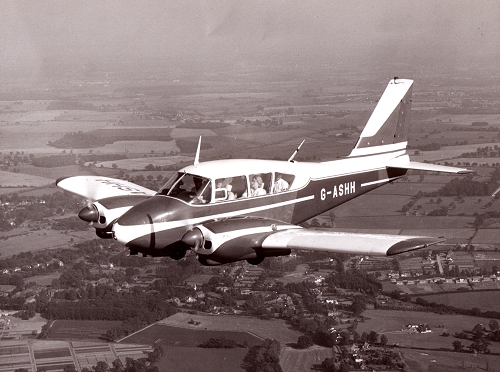
Piper Aztec G-ASHH was the second aircraft in the Gregory fleet, and the first to be transfered from Denham to the new base at Liverpool.
|
The first new aircraft purchased in 1964 was a Piper PA-30 Twin Comanche, G-ASMR, delivered in January. This was followed by a second, G-ASON, in April, along with a second Piper PA-23-250B Aztec, G-ASRI, to replace the Aztec they had leased from CCF Aviation the previous year. The original Aztec, G-ASHH, was moved from Denham to the new base at Liverpool at the same time.
|

The first of the new Gregory aircraft in 1964 was Piper PA-30 Twin Comanche G-ASMR.
|
|

Twin Comanche G-ASON was purchased in April.
|
|

Piper PA-23 Aztec G-ASRI replaced the leased aircraft in 1964.
|
On 20 April, Dr Neil Duncan visited Denham to collect one of the aircraft Air Gregory had been operating on behalf of the manufactuer, Pilatus of Switzerland. Air Gregory had been demonstrating the aircraft to potential customers on behalf of Pilatus and in Dr Duncan they had certainly found the right organisation for the tough PC-6. Dr Duncan was both a doctor and a pilot and had founded the first Flying Doctor Service in Africa. Based in Northern Nigeria, one of the Service's aircraft had been lost in a storm in December 1963, and the PC-6 was considered the ideal machine to replace it. The story attracted the attention of the press because the BBC sent one of the stars of their radio drama series 'Flying Doctor', Bettina Dickson, to Denham to meet Dr Duncan and to present him with a cheque for £5,000 on behalf of Oxfam. The money had been raised by the listeners to the radio series. Dr Duncan took the Pilatus PC-6/350, HB-FAG, to Nigeria where it was to be used extensively by the Flying Doctor Service, re-registered as 5N-ADG.
|
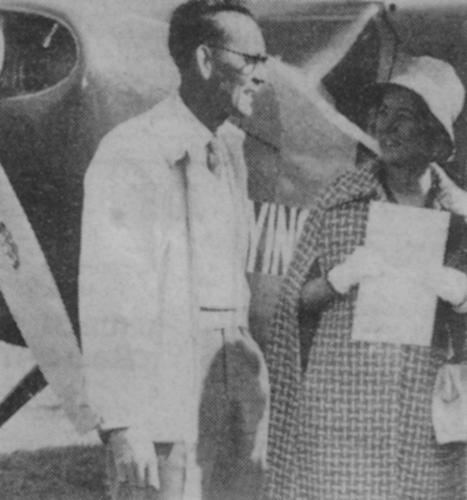
Dr Neil Duncan and Bettina Dickson with the Pilatus PC-6/350 HB-FAG at Denham. Dr Duncan was collecting the aircraft on behalf of the Flying Doctor Service in Africa.
|
|

Pilatus PC-6/350 HB-FAG became 5N-ADG with the Flying Doctor Service of Africa.
|
While the business aviation side was growing, the Denham School of Flying, set up by David Ogilvy in the original flying club huts on the south side was finding the accomodation a little cramped, classroom, planning and breifing facilities for students and instructors alike were at a premium. Eva Bickerton made a planning application to erect a new office building on the site of the original huts on 22 April in order to provide better facilities. This was approved on 18 December and work began on a far more spacious and open office building which is the basis of what today forms the tower and terminal lounges.
|
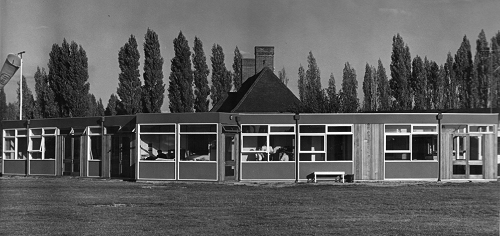
The new offices on the south side of the aerodrome were used by the flying school and form the basis of the current tower complex.
|
On 15 November, United Biscuits Aviation Department purchased a second aircraft for the business, a Rockwell Aero Commander 560F, G-ASYA. The personnel transport needs of the business were increasing and the Aero Commander had a seperate six seater cabin with the option of a seventh passenger in the co-pilot's seat. The more powerful 350 hp Lycoming IO-540 engines gave the type a marginally higher speed over the Aztec of 242 mph, and a longer range of 1,500 nm made it a more useful tool for flying into Europe. Alongside the Aztec purchased the previous year, these two aircraft were to serve the company well for the next four years.
|
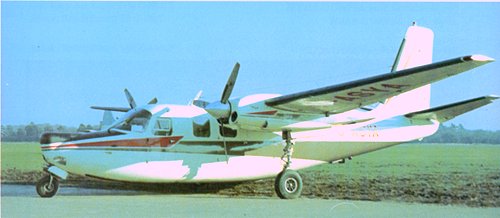
United Biscuits latest acquisition was this Rockwell Aero Commander 560F, G-ASYA.
|
Also towards the end of the year, the Gregory Group acquired two more Piper PA-23 Twin Comanches, G-ASYK in November and G-ASYO in December. These were to operate from Denham initially, but were to often sent to the Liverpool and Sunderland bases as the aircraft there required maintenance.
|
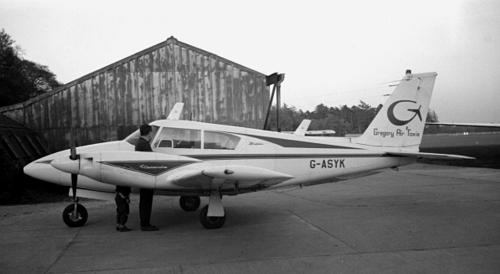
Gregory Air Taxis Twin Comanche G-ASYK seen parked between the north side hangars.
|
|
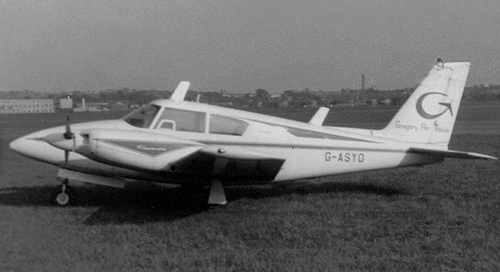
Gregory Air Taxis Twin Comanche G-ASYO as it appeared in 1964.
|
The increase in the Gregory fleet was to continue over the next three years and the company was to diversify into a variety of aviation interests during 1965, as will be related next.
|
|

